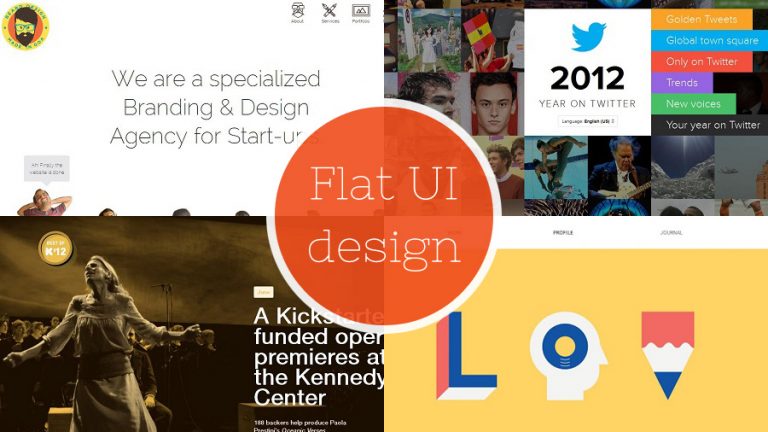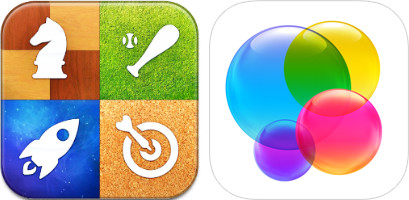Recently, there’s been a trend in both web design and computer interface design — both mobile and desktop — and you’ve probably come to wonder if it is just another fad. Flat UI has burst onto the scene with Windows 8 and now Apple’s iOS 7 and understandably, people are starting to wonder as to whether or not the flat trend is here to stay. We’ve seen trends in interface design before, again from Apple with their skeuomorphic designs that copied physical, real-world objects, like leather-bound notebooks. Now though, things are flat, digital and almost cold. Some of us like flat UI, some of us don’t, but what we’re going to look at here is whether or not it’s going to be with us for the foreseeable future or if it’s just another wayward fad.
Flat Design Just Looks Digital
For a long time, Apple wanted you to believe your iPhone had leather inside of it and the Game Center icon was made of felt. Now, that’s all gone with iOS 7, Windows 8 and the latest versions of Android. The industry is no longer interested in disguising software with cutesy effects to mirror the real world. Smartphone UIs are now very digital-looking, and our laptops have never felt so futuristic. Flat UI is great for tablets and smartphones, because after all, these are digital devices, so why shouldn’t the interface be digital as well? Technology should look like technology. It might not seem like a huge difference, but these new UIs have made our laptops and smartphones seem more like technology than before. No longer are these devices cutesy portable organizers, they’re sophisticated pieces of the future.
They’re Great for Responsive Design
Simple icon designs that use color and vector images are easily scaled and therefore, websites that use a responsive design can easily use the same assets on smartphones, tablets and computers. Since the web has gone mobile, users expect the same sort of experience in the palm of their hand as they do from their laptops. With modern, flat UIs like Windows 8 and iOS 7 we look at our smartphones like PCs and responsive design works best with flat UIs. It’s easier than ever to scale flat designs to whatever size or shape is needed, which is important when there are so many of them.
 Source →
Source →
Flat UIs Are Ready for the Future
It’s not just the internet that’s changing right now; technology is moving into new territories as well, and flat design is ready to meet it. For instance, if we take a look at the curved displays coming from Samsung and LG, an iOS 6 and below look just wouldn’t work. The detailed, skeuomorphic icon design would look strange on curved displays. With flat and matte user interfaces, it doesn’t matter if the image gets curved or not, it’ll still look mostly the same no matter what the display. Interfaces built using vector graphics and such will also scale much easier to high-resolution displays, which is why Windows 8 scales so well on any screen size imaginable.
Wearable technology is another area where flat UI is going to be very useful. Smartwatches and headgear like Google Glass can’t rely on traditional UIs as they’re far too distracting and they don’t take advantage of the meager resources available in these small devices. If an iWatch is indeed coming from Apple, then iOS 7 is ready for it. Flat and matte icons will look great on a watch display, but the glass orbs from past iOS versions simply wouldn’t work well at all.
Modern Interfaces are Simple and Easy to Use
While there was a lot of buzz surrounding the drastic change in Windows 8, the simplistic UI actually made a lot of things easier to use and while Windows 8.1 still has some issues to fix, it’s a great OS to use. The same can be said for iOS 7. It takes a little time to relearn what you already knew under the old interface, but once you do that it’s simple to use and pretty self-explanatory. With modern UIs like those found in Windows Phone, it’s easy to get what you want, without having to dig through menus and launchers just because they look nice. Instead, you find the colorful yet simple-looking phone icon and you can make a call. Easy peasy.
What Traits To Look For When Hiring For Customer SupportIt might sound trivial, but the simplicity of these new UI paradigms make it easier for users to get to the apps they want and to generally use their smartphones, tablets or laptops. Less is more, and Microsoft had to struggle to get their point across in Windows 8 and now Apple is facing the same struggle with iOS 7.
The Flat UI Is Here to Stay, At Least for Now
It’s pretty safe to say that flat design and modern UIs aren’t going anywhere soon. After all, they’re pretty much built for upcoming technological advancements. Systems like iOS 7, Windows 8 and even responsive web design will continue to be iterated upon in the next few years, but we’ve already had our radical UI change this decade. This year has arguably been the biggest shift in UI paradigms we’ve ever seen and after such a big change, we’re now all going to have to live with it. Flat UIs are here to stay and while they might change their look in the coming years, we’ll soon come to love them.
From Freelance To Firm: How Digital Signatures Scale Your Design Business







